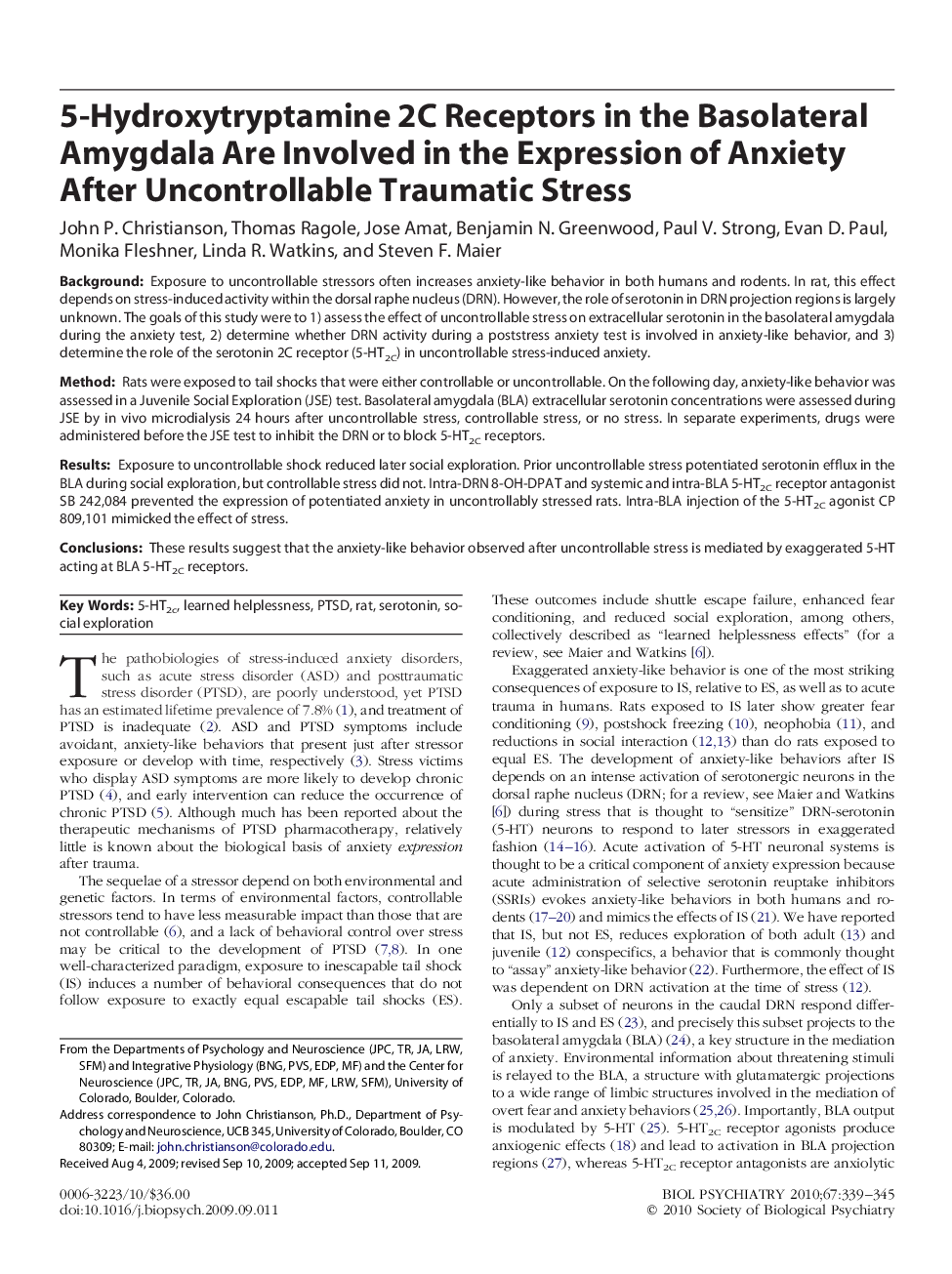| Article ID | Journal | Published Year | Pages | File Type |
|---|---|---|---|---|
| 6228366 | Biological Psychiatry | 2010 | 7 Pages |
BackgroundExposure to uncontrollable stressors often increases anxiety-like behavior in both humans and rodents. In rat, this effect depends on stress-induced activity within the dorsal raphe nucleus (DRN). However, the role of serotonin in DRN projection regions is largely unknown. The goals of this study were to 1) assess the effect of uncontrollable stress on extracellular serotonin in the basolateral amygdala during the anxiety test, 2) determine whether DRN activity during a poststress anxiety test is involved in anxiety-like behavior, and 3) determine the role of the serotonin 2C receptor (5-HT2C) in uncontrollable stress-induced anxiety.MethodRats were exposed to tail shocks that were either controllable or uncontrollable. On the following day, anxiety-like behavior was assessed in a Juvenile Social Exploration (JSE) test. Basolateral amygdala (BLA) extracellular serotonin concentrations were assessed during JSE by in vivo microdialysis 24 hours after uncontrollable stress, controllable stress, or no stress. In separate experiments, drugs were administered before the JSE test to inhibit the DRN or to block 5-HT2C receptors.ResultsExposure to uncontrollable shock reduced later social exploration. Prior uncontrollable stress potentiated serotonin efflux in the BLA during social exploration, but controllable stress did not. Intra-DRN 8-OH-DPAT and systemic and intra-BLA 5-HT2C receptor antagonist SB 242,084 prevented the expression of potentiated anxiety in uncontrollably stressed rats. Intra-BLA injection of the 5-HT2C agonist CP 809,101 mimicked the effect of stress.ConclusionsThese results suggest that the anxiety-like behavior observed after uncontrollable stress is mediated by exaggerated 5-HT acting at BLA 5-HT2C receptors.
